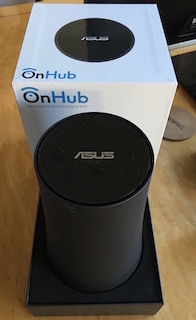Nov 15th, 2015 - Category: Strategy
 In case you missed the news, Google changed it’s name to Alphabet Inc. a couple of months ago. As Google says, “Alphabet is a holding company that gives ambitious projects the resources, freedom, and focus to make their ideas happen,” but it looks more like the beginning of a weird chapter in Google’s history. It reminds me of a situation I’ve seen many times. A company reaches a high level of success and then turns its energies inward. What follows is predictable: reorganizations, efficiency initiatives, price “optimization,” and other efforts focused on everything except the “customer first” attitudes which made the company successful. It can start small with changes like a middle manager revising customer service policies or, as in Google’s case, it can be a massive company wide shift.
In case you missed the news, Google changed it’s name to Alphabet Inc. a couple of months ago. As Google says, “Alphabet is a holding company that gives ambitious projects the resources, freedom, and focus to make their ideas happen,” but it looks more like the beginning of a weird chapter in Google’s history. It reminds me of a situation I’ve seen many times. A company reaches a high level of success and then turns its energies inward. What follows is predictable: reorganizations, efficiency initiatives, price “optimization,” and other efforts focused on everything except the “customer first” attitudes which made the company successful. It can start small with changes like a middle manager revising customer service policies or, as in Google’s case, it can be a massive company wide shift.
For many tech companies, it takes the form of small changes: “Restocking fees will offset our inventory costs” and voila, a 15% restocking charge is added. “Demo equipment sales could be a profit center.” “Software maintenance is responsible for 20% of our revenue. How can we increase this?” “Application engineers are doing free consulting?! Why aren’t customers paying for this?” These “improvements” barely get a nod from upper management and are seen as revenue generators. What could go wrong? Soon the inmates are running the asylum and one by one, customers begin to look elsewhere for products and services.
 This might be happening to Google and Alphabet Inc might be the first symptom. They have reached an incredible level of success and have begun to turn their attention inward. They have become so big and successful that they need an umbrella organization to hold all the wildly different companies that used to be just plain Google. Google Search didn’t need much of a customer service department, but now that they are beginning to make hardware, customer expectations are completely different. I wrote about this in the recent post “The Damage Bad Products Can Cause – Google’s OnHub.” After I wrote this, it seemed unfair to comment on a product I had never tried so I bought one. What arrived was a beautiful product with beautiful packaging that just didn’t work.
This might be happening to Google and Alphabet Inc might be the first symptom. They have reached an incredible level of success and have begun to turn their attention inward. They have become so big and successful that they need an umbrella organization to hold all the wildly different companies that used to be just plain Google. Google Search didn’t need much of a customer service department, but now that they are beginning to make hardware, customer expectations are completely different. I wrote about this in the recent post “The Damage Bad Products Can Cause – Google’s OnHub.” After I wrote this, it seemed unfair to comment on a product I had never tried so I bought one. What arrived was a beautiful product with beautiful packaging that just didn’t work.
I’m glad I purchased a unit because now I know first hand that not only were my suspicions correct, but also that Google has absolutely no idea how to support customers. To make a long story short, OnHub simply didn’t work in my very standard DSL based home networking environment where both a generic router and Apple Airport Extreme router worked out of the box. I called Google technical support.  It was great. The agent spent hours on the phone with me and we finally got it to work… for ten minutes… and it failed again… Then an hour later it worked again… Then it failed again… In hindsight, we spent way too much time on a product that was clearly not tested properly before release. When it did work, my other suspicious were confirmed by strangely worded prompts such as “OnHub feels right at home. OnHub is registering itself as yours.”
It was great. The agent spent hours on the phone with me and we finally got it to work… for ten minutes… and it failed again… Then an hour later it worked again… Then it failed again… In hindsight, we spent way too much time on a product that was clearly not tested properly before release. When it did work, my other suspicious were confirmed by strangely worded prompts such as “OnHub feels right at home. OnHub is registering itself as yours.”
Ok, bizarre, but no big deal, just return it and move on. Then it got even weirder. The return customer service agent, whose name was “Lady,” could not write a coherent sentence in English. It was clear she never read why the unit was being returned since her boilerplate email had the subject line: ”Buyer’s Remorse Form.” Maybe Google has been providing services at no charge for so long that they don’t understand the expectations that go with a first rate company selling a premium product.
If this can happen to Google, it can happen to other technology companies. Customers are precious. It takes a lot of work to gain their valuable trust and respect. Hopefully now that Google has a whole Alphabet of companies to draw on, “C” can stand for Customer Service. Does it stand for Customer Service in your organization?

